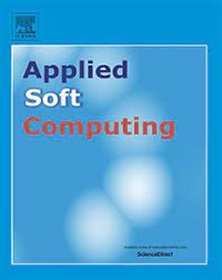Category-level pipe pose and size estimation via geometry-aware adaptive curvature convolution
IF 7.2
1区 计算机科学
Q1 COMPUTER SCIENCE, ARTIFICIAL INTELLIGENCE
引用次数: 0
Abstract
Pipe pose estimation provides crucial positional information for robots, enhancing assembly efficiency and precision, while its accuracy critically impacts the final product's reliability and quality. To handle unseen pipes, we propose a category-level pipe pose and size estimation network via Normalized Object Coordinate Space (NOCS) representation. Given an RGB image and its corresponding depth map, our network predicts class labels, bounding boxes and instance masks for detection, as well as NOCS maps for pose estimation. Then these predictions are aligned with the depth map to estimate pipe’s pose and size. To better extract complex and variable pipe morphology, geometry-aware adaptive curvature convolution is introduced to dynamically adapt to the slender structure and improve segmentation performance. Facing the lack of pipe pose datasets with enough instances, pose, clutter, occlusion, and illumination variation, we propose a novel domain randomization mixed reality approach to efficiently generate synthetic data, which addresses the limitations of training datasets, making data generation more time- and effort-efficient. Experimental results demonstrate that our Geometry-Aware Adaptive Convolutional Network (GACNet) outperforms other methods and robustly estimates the pose and size of unseen pipes in real-world environments.
求助全文
约1分钟内获得全文
求助全文
来源期刊

Applied Soft Computing
工程技术-计算机:跨学科应用
CiteScore
15.80
自引率
6.90%
发文量
874
审稿时长
10.9 months
期刊介绍:
Applied Soft Computing is an international journal promoting an integrated view of soft computing to solve real life problems.The focus is to publish the highest quality research in application and convergence of the areas of Fuzzy Logic, Neural Networks, Evolutionary Computing, Rough Sets and other similar techniques to address real world complexities.
Applied Soft Computing is a rolling publication: articles are published as soon as the editor-in-chief has accepted them. Therefore, the web site will continuously be updated with new articles and the publication time will be short.
 求助内容:
求助内容: 应助结果提醒方式:
应助结果提醒方式:


